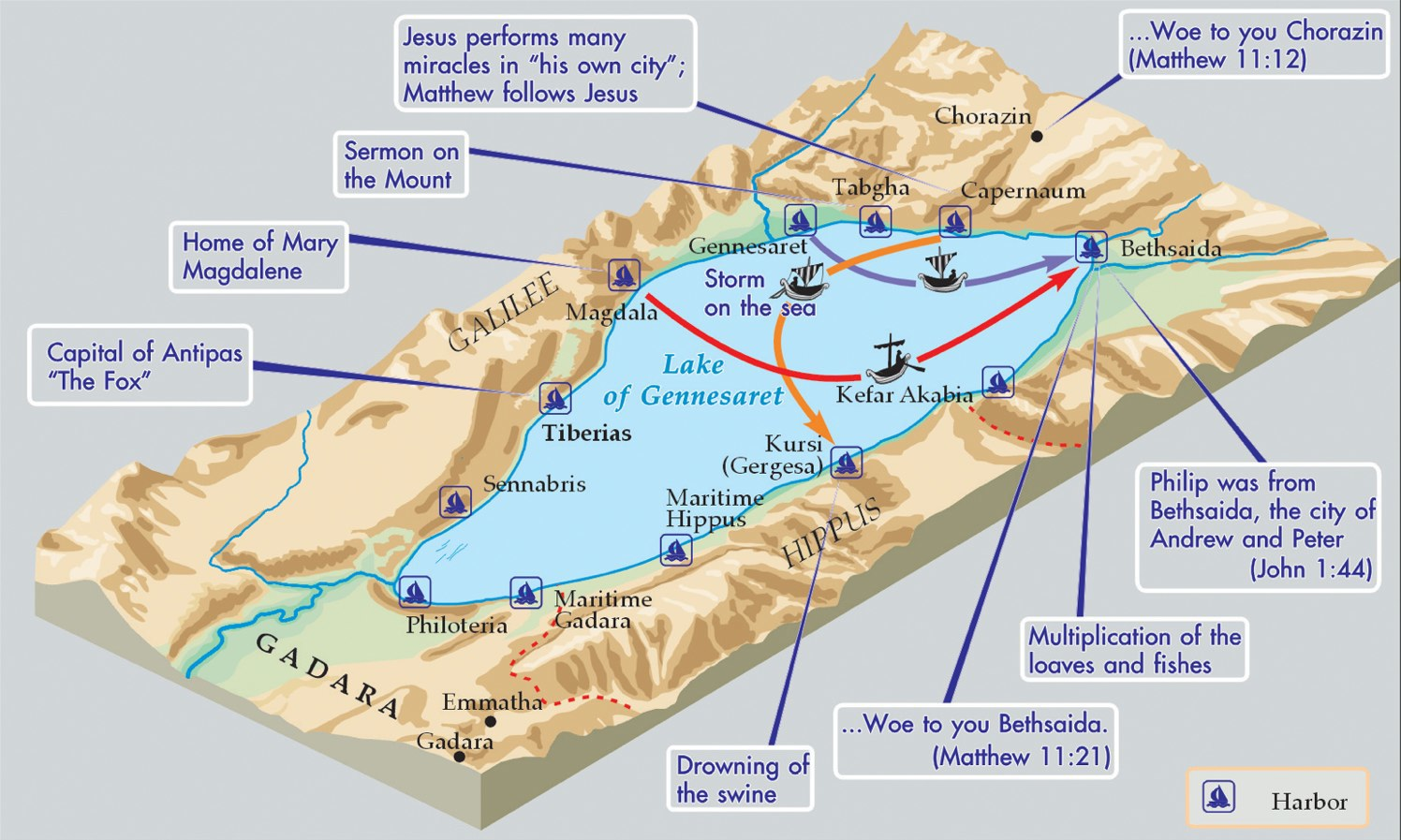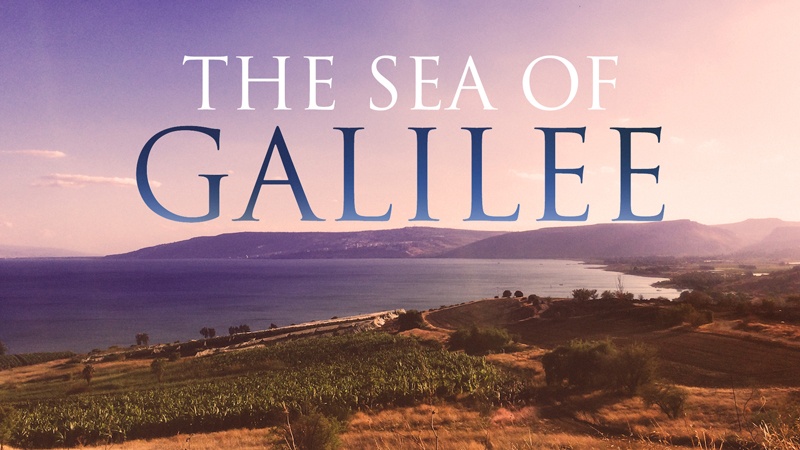Ready for a bit of Bible geography? I hope so. Knowing the geography in and around Israel is an important part of our understanding the whole Bible – from the call of Abram to the travels of Paul. We should consider including geographic details as part of our instruction, both in small Bible studies and embedded in our sermons.
The Sea of Galilee & Its Centrality to Jesus’ Ministry
In a recent pilgrimage to Israel, I was more awakened to the centrality and size of the Sea of Galilee, as it’s most widely named in Scripture, including more familiar passages in Matthew. Luke names the sea the Lake of Gennesaret. Due to its shape, it’s also called the Kinneret, stemming from the Hebrew word kinnor, meaning lyre or harp.
The majority of Jesus’ ministry is around the Sea of Galilee. Located north of the Jordan River, east of Nazareth, just south of Syria, and some 40 miles from Jerusalem, it’s peculiar why Jesus chose this northern region of Palestine to begin his ministry. Even though we might consider Nazareth set apart from the Galilean area today, it was part of the same district in Jesus’ time (Matthew 2:22-23), so essentially Jesus was on his home turf, or fairly close to it.
I’ve provided a very helpful map from Harmony Bible that helps show the activity around the lake.
Matthew 3:12-13 starts our journey: “When Jesus heard that John had been put in prison, he returned to Galilee. Leaving Nazareth, he went and lived in Capernaum, which was by the lake…” Matthew quotes Isaiah and gives us another reason why Jesus came to this spot: prophecy –
Land of Zebulun and land of Naphtali, the way to the sea, along the Jordan, Galilee of the Gentiles – the people living in darkness have seen a great light; on those living in the land of the shadow of death a light has dawned. (Matthew 3:15-16; Isaiah 9:1-2)
Capernaum is literally a stone’s throw from the Sea of Galilee. It’s where Peter grows up (8:14-15) and where Jesus gets tossed out of the synagogue (Mark 1:21-28), among other events. As he preaches repentance, he walks by the Sea and collects his first disciples (4:18-22). Matthew describes their response to Jesus as immediate. Jesus’ wild call to follow and learn must have been so extraordinary that they simply abandoned their boats for the day to see who this wandering prophet might be. And, when we step back from it and untangle it from our knowledge of the Great Commission that ends Matthew’s Gospel, what a very odd statement from Jesus: “I will make you fishers of men.” But, this sea, this water, this lifestyle of fishing and their dependency on the catch somehow makes this transition to following Jesus easier. I wonder if we live in a dependent way, knowing our talents, finances, personality, and place in the world don’t make us anymore important to God’s plan.
In verse 23 of chapter 4, it says that Jesus goes, “throughout Galilee, teaching in their synagogues, preaching the good news of the kingdom, and healing every disease and sickness among the people.” We know the next part. The sick and broken, the curious and the cynics flock to Jesus. They want to see if the rumors are true.
From here, Jesus’ ministry takes off. He begins to teach on the mountainside just off the seashore in chapter 5. When he comes off the mountain, he heals a leper in chapter 8 and returns to Capernaum where he encounters the centurion with faith that outdoes my mustard seed kind, I know. While in Capernaum, he heals Peter’s mother-in-law before crossing the lake for Gergesa (orange arrow below), where he calms the storm and runs demon-possessed pigs off a cliff.

The journey in around the sea continues until chapter 19 when Matthew says, “he left Galilee and went into the region of Judea,” and, further in 20:17, the text says, “Now Jesus was going to Jerusalem…” Even the place we think the Transfiguration took place can be seen in the distance from atop one of the mountains that border in the lake.
After Jesus resurrects, he tells the the women to pass this message along to the disciples: “Go and tell my brothers to go Galilee; there they will see me” (28:10). John even records the miraculous catch in chapter 21, Jesus eating a meal with his disciples, and restoring Peter with the three-times-over command to, “Feed my sheep.”
Jesus’ ministry around the Sea of Galilee can help us in several ways as pastors.
First, it helps give a central location for our parishioners. Asking, “OK, where is the lake located in this story?” is a legitimate question and it helps focus our theology around geography.
Second, it provides a way to talk through the separate communities of Jews and pagans in and around this area, and so too, how we live in the world and not in a “Christian nation.” It’s easy to generalize that in this region there were predominantly Jewish people and forget (or ignore) the truth that there were many different people with varying faiths and opinions just like today.
Third, it might challenge us to a more simple life. Remember, this is the countryside. When Jesus says, “Don’t worry about tomorrow…” (6:25), he’s looking out onto the lake. He’s not in the hustle and bustle of city life. We should be challenged to certainly find peace in the place God plants us, even if that is in an urban area, but we should also find ways to connect and be dependent on his provisions that are more natural than the concrete worlds we live within so often.
Here is a very well known Christian worship song, Oceans by Hillsong United. They recorded this version of this song, live on the Sea of Galilee. There is something powerful about hearing the lyrics “Let me walk upon the waters wherever You would call me” sung on the very water that Jesus walked on and called Peter out of the boat.

